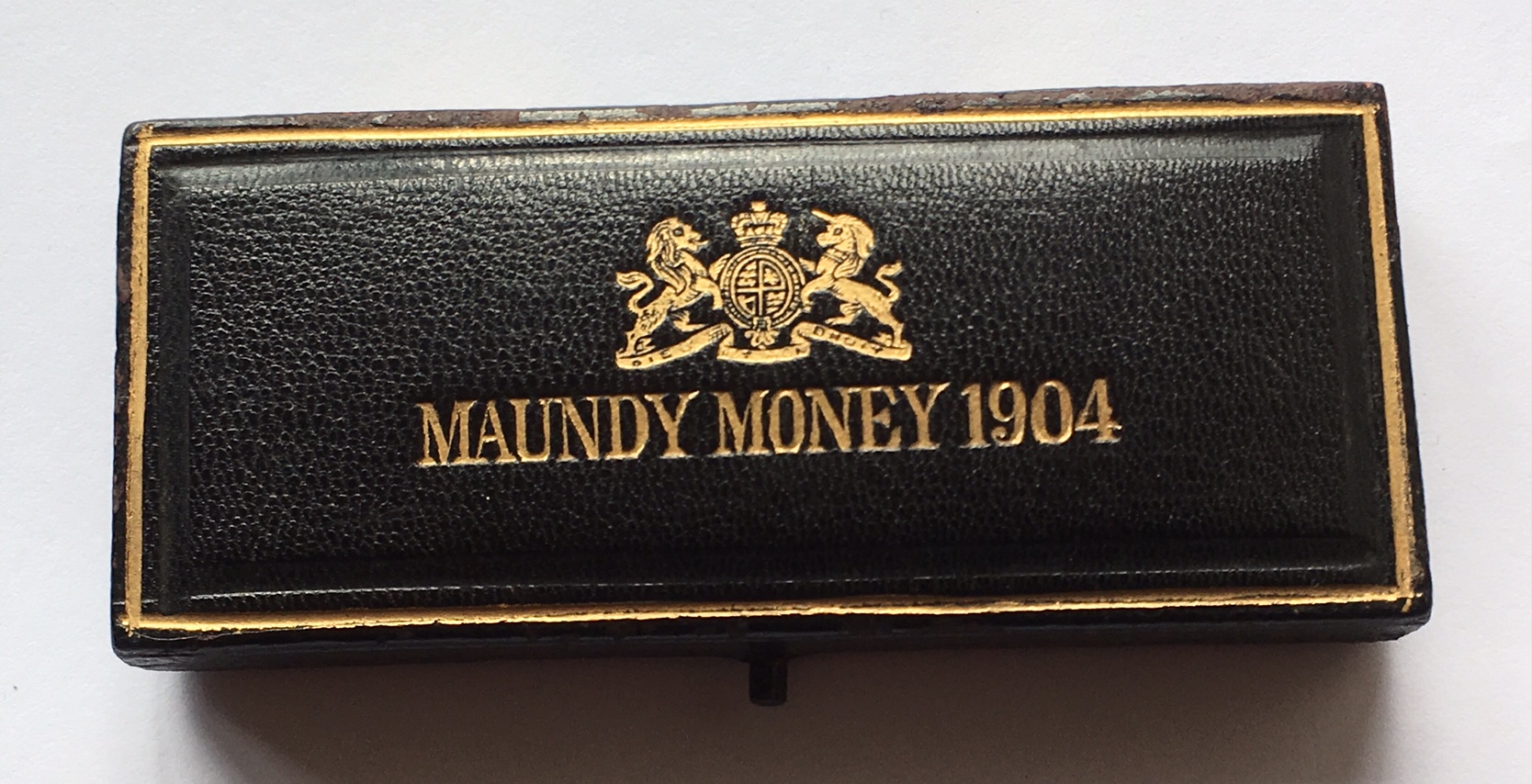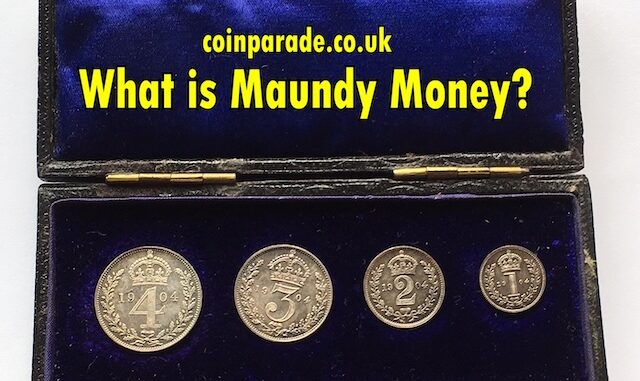
Maundy Money are coins traditionally given out by the Monarch as a gift to the poor at Royal Maundy. The ceremony, which is associated with Christianity, is held on Maundy Thursday which is the day before Good Friday. The Maundy set consists of four coins, denominated one penny, two pence, three pence and four pence. The number of sets given out to each man and woman is equivalent to the age of the Monarch in years.
Royal Maundy probably dates back to the 13th Century. Maundy derives from mandatum which Jesus said meaning ‘that ye love one another’. It was the act of washing the feet of the poor and giving food and clothing to the poor. The Royal Families of the middle ages copied the ceremony as a way of showing humility.
Maundy coin sets can be purchased from the Royal Mint.
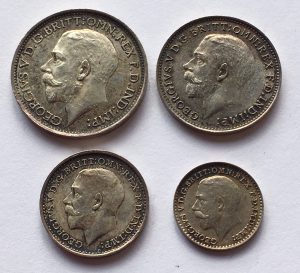
By 1699 the Monarch would send a representative rather than attend themselves, and not long after the act of washing feet was abandoned. By the 19th century the Royals thought that giving money was more convenient than food and clothes and originally gave coins of the day but later gave specially made silver coins.
It was not until 1931 that King George V restarted the tradition that the Monarch attended in person. Queen Elizabeth almost always attends and has only missed a few ceremonies. The ceremony was traditionally in or near London (mainly Westminster Abbey) but in recent years has moved around the country at various Cathedrals such as Leicester, Sheffield, Manchester, York Minster and Armagh.
The coins used to be given to the poor but these days are given to people nominated for their work done in the local Church. So on (say) the Queen’s 90th birthday, she would give 90 sets to selected men and 90 sets to selected women. The coins would be issued in a leather purse; a white one contains the Maundy coins, and a red purse containing current coinage as an additional gift.
The Maundy Coins
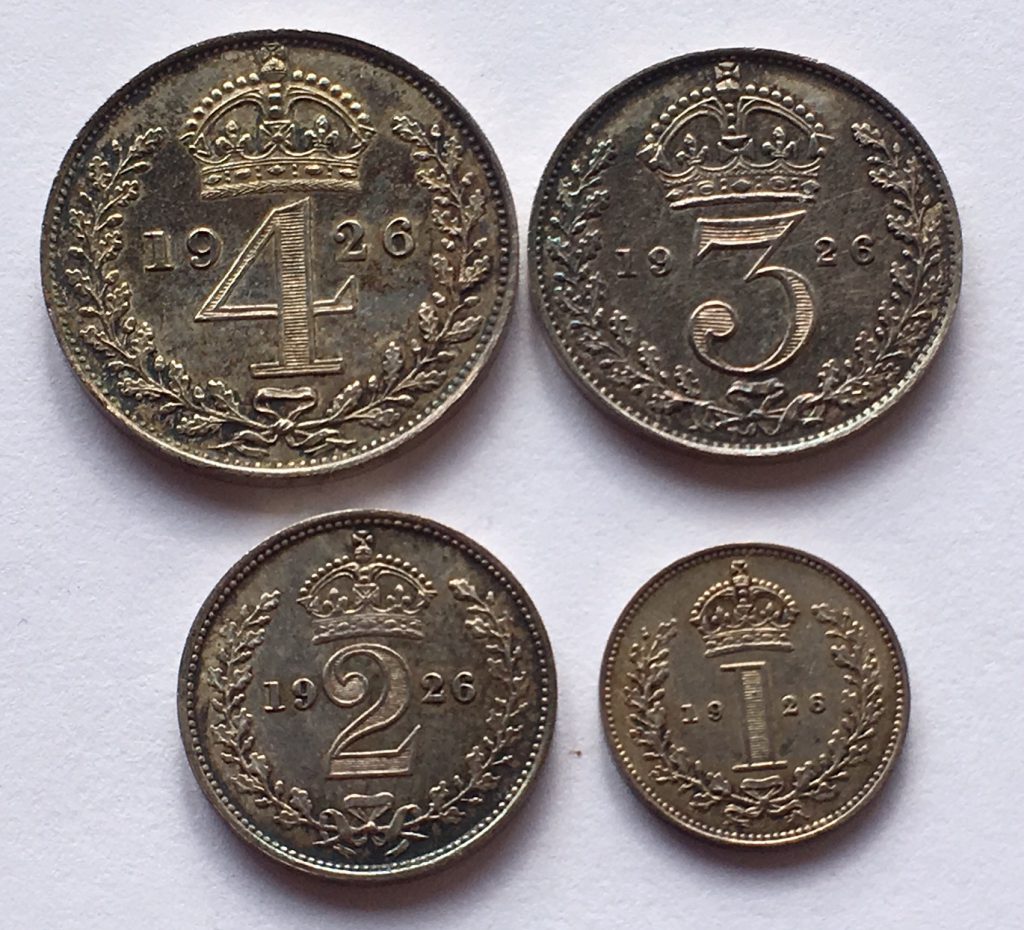
Image Credit: M J Hughes Coins
The four coins are one penny, two pence, three pence and four pence. Since decimalisation these have been upgraded by law from penny to new penny. They are made from Stirling silver (92.5% silver) and although specifically made for this ceremony they are still legal tender. The design is virtually unchanged from 1822.
The reverse, which is a crowned numeral within an oak wreath, was created by Jean Baptiste Merlen back in 1822 and has only been altered slightly since then.
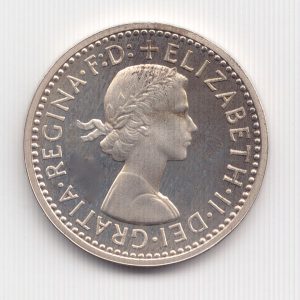
The obverse shows the head of the monarch as you would expect. However, if you look at the Queen Elizabeth obverse you can see that the portrait is the original portrait used from when she first issued coins; although the Queen has had about five portraits the original (by Mary Gillick) is still used.
Even back in Victorian days the recipients of Maundy money soon sold their sets for a premium, especially around the time of the Jubilee when Americans prized the souvenir. The purses could also fetch a handsome amount.
Besides the sets given out by the Monarch, many other sets are minted for official gifts and for collectors. These are issued in a case rather than a purse. Many were given to Mint workers or other officials. Maundy sets could be ordered from the bank until 1908, when 9,929 were minted in that year. Dealers scrambled for sets and sold them at high profit. This eventually got a little out of hand and the Mint cut back production heavily. In recent years the mintage numbers have been around 1600-1900 sets.
Maundy Coin Specifications
| Coin | Weight | Diameter |
|---|---|---|
| 1p | 0.47 g | 11.152 mm |
| 2p | 0.94 g | 13.443 mm |
| 3p | 1.41 g | 16.264 mm |
| 4p | 1.88 g | 17.63 mm |
